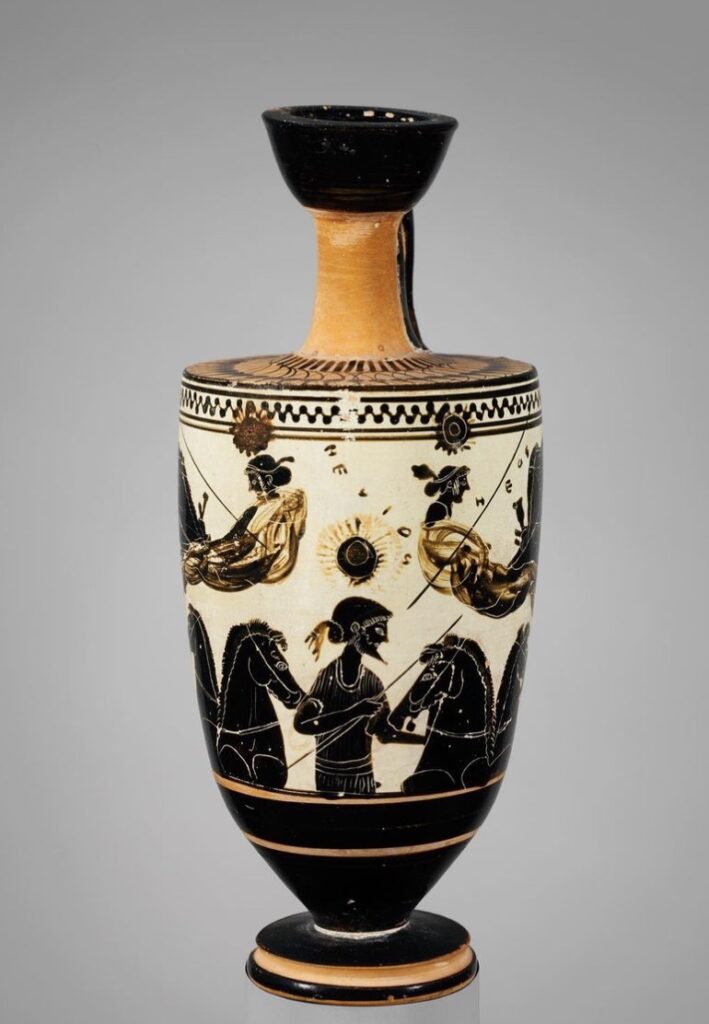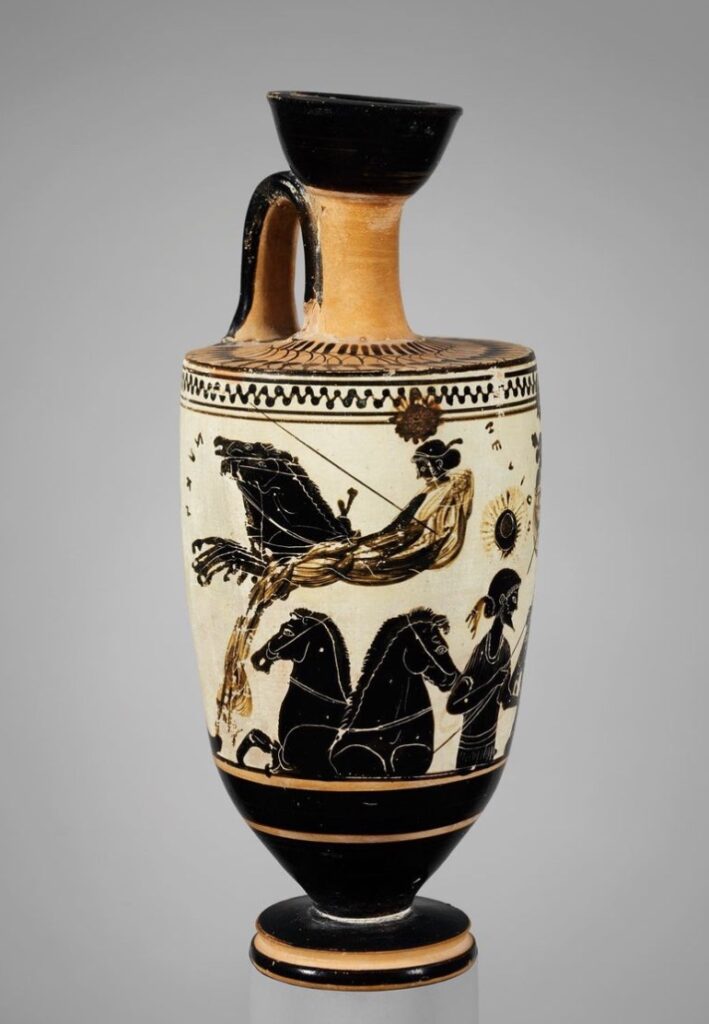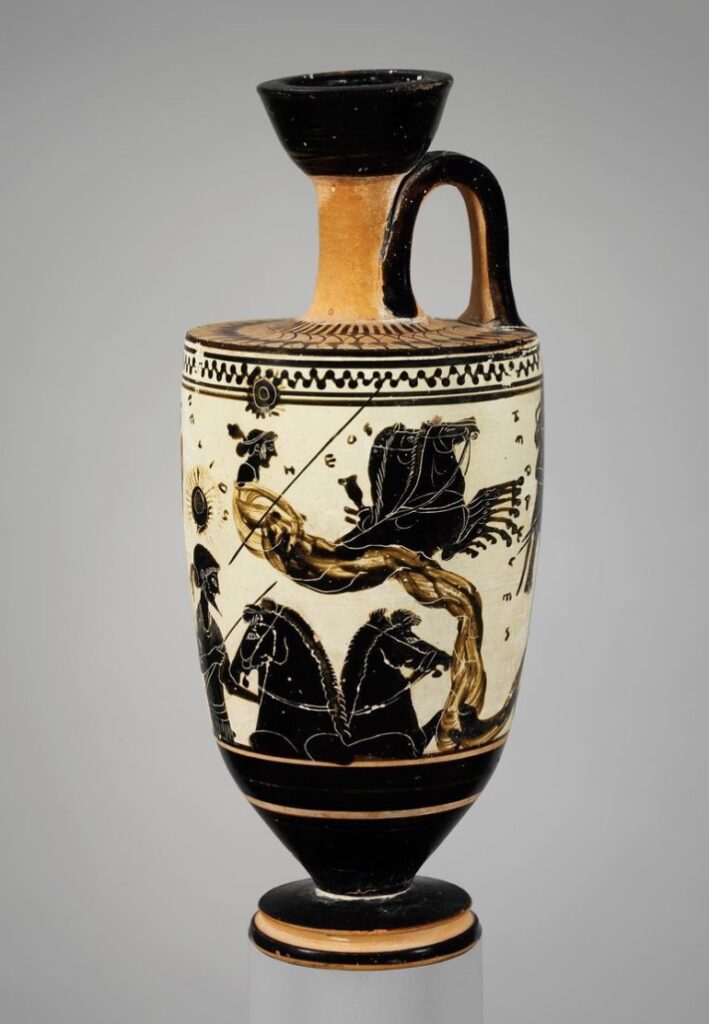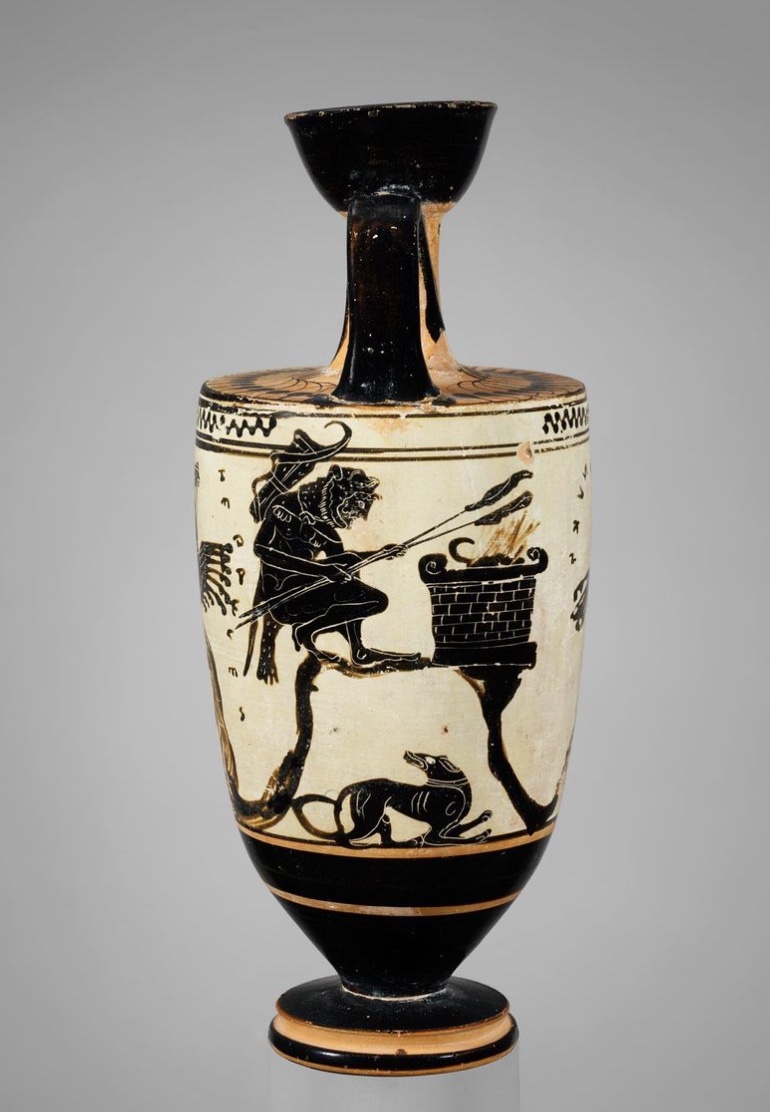Extreme in all his appetites, Herakles is shown on this superb white ground lekythos at the Met, a vase so clever in its ambiguity.
On this small lekythos the hero has climbed upon a tenuous platform upon which an altar sits. He crouches over, his lion skin hood bristling above him, and brandishes two spits of meat (no single kebab for him!) over the flame, as a curious dog peers up from below (clearly hoping for some drippings and droppings).




The other side of the vase is perhaps more important art historically: Eos (dawn) is shown in a chariot driving dawn across the sky, while Nyx (night) drives the night out, and Helios prepares to ascend in his quadriga. In this context the the scene is often interpreted as Herakles performing a sacrifice to Helios before venturing west on one of his arduous labors.
Herakles was a devout hedonist, not always fully respectful of the gods but largely tempted by earthly pleasures. One does wonder about this depiction: is he sacrificing to a deity or having a little barbecue to recuperate from one labour, revving himself up for the next task ahead? Or can both exist interchangeably? The dog certainly expects immediate material rewards…




